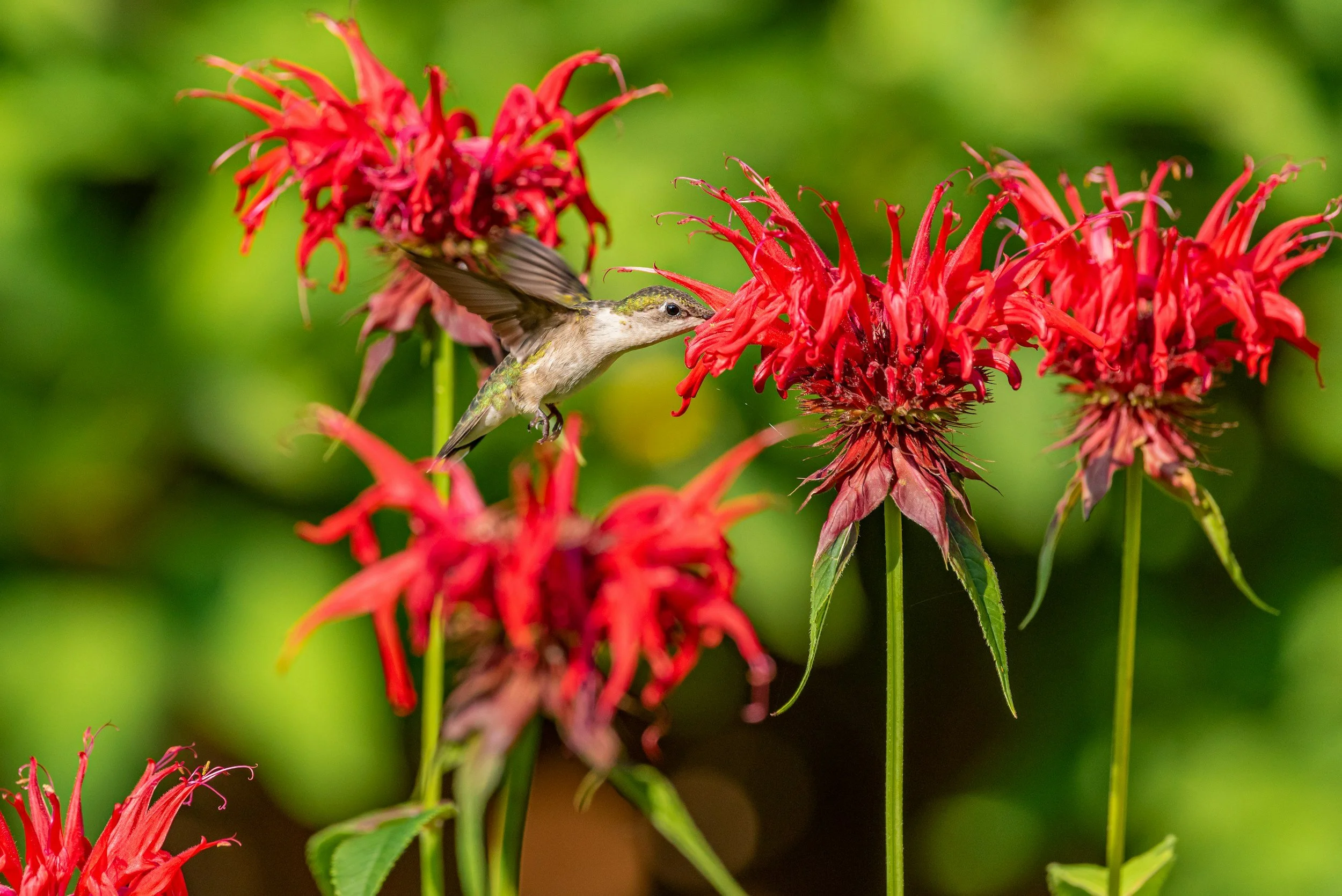August 2025 - Native Plant Of The Month - Monarda (Bee Balm)
There’s no better way to celebrate the height of summer than by spotlighting one of our absolute favorite native blooms — Monarda, commonly known as bee balm or wild bergamot. Bursting into full glory in July and August, this vibrant and pollinator-friendly perennial brings energy, color, and ecological richness to any garden or landscape.
What is Monarda?
Monarda is a vibrant genus in the mint family (Lamiaceae), encompassing several North American native species such as Monarda didyma (scarlet bee balm), Monarda fistulosa (wild bergamot), and Monarda punctata (spotted bee balm). Renowned for their spiky, firework-like blooms in bold shades of red, pink, lavender, and purple, Monarda’s are pollinator magnets—drawing in hummingbirds, butterflies, and bees with their bright colors and fragrant foliage. Monarda punctata, in particular, stands out with its unique tiered, yellow-and-purple spotted flowers and whorled bracts, making it a favorite among native plant enthusiasts and beneficial insects alike.
Native to Illinois: Monarda fistulosa, M. bradburiana, M. punctata
Not native to Illinois: Monarda didyma and most cultivated hybrids (native to Eastern US)
Still beneficial: Even non-native Monarda can attract pollinators, but for ecological restoration or native plant gardens, choose Illinois-native species
Why We Love Bee Balms and Wild Bergamot
Bee balm (Monarda spp.) is a bold, beautiful, and beneficial addition to any garden—especially if you're aiming to support native biodiversity. This hardy native perennial is a magnet for pollinators like hummingbirds, native bees, and swallowtail butterflies, offering an abundant nectar source throughout the summer. With its dramatic flower heads in vivid colors and aromatic foliage, Monarda adds visual impact to borders, prairie-style plantings, and naturalized areas, pairing well with coneflowers, black-eyed Susans, and ornamental grasses. It thrives in full sun to partial shade, is drought-tolerant once established, deer-resistant, and adapts easily to a variety of soil types. However, in ideal growing conditions it can be prone to self-seeding and spreading by rhizomes, so be sure to give it space to roam or plan accordingly to manage its enthusiastic growth.
Tips for Growing Monarda
Sunlight: Prefers full sun for best blooming, but tolerates partial shade, especially in hotter climates.
Soil: Thrives in moist, well-drained soil enriched with organic matter. Avoid dry, compacted areas.
Spacing: Plant 18–24 inches apart to encourage good air circulation and reduce the risk of powdery mildew, a common fungal issue.
Watering: Keep soil evenly moist, especially during hot, dry periods. Avoid overhead watering if mildew is a concern.
Deadheading: Remove spent flowers to encourage more blooms and extend flowering. Or leave some seed heads for birds to enjoy in fall.
Division: Divide every 2–3 years in early spring or fall to maintain vigor and prevent overly aggressive spread via rhizomes.
Self-Seeding: Bee balm may self-seed readily. If you want to control where it spreads, deadhead flowers before seeds develop.
Design Tip from Rooftopia:
We love using wild bergamot and spotted bee balm in layered native plantings to add height and vibrancy. It’s a perfect mid-to-back border plant that plays well with others in a biodiverse design. Want movement, fragrance, color, and wildlife in your garden? Monarda delivers — and looks spectacular doing it.
August is Bee Balm Season — Don’t Miss It!
Whether you're creating a modern native landscape or a cozy cottage garden, Monarda (bee balm) is a summer showstopper. Blooming boldly through August, it draws hummingbirds, butterflies, and bees with its vibrant, spiky blooms. Indigenous communities brewed it as a tea for colds and digestion, and after the Boston Tea Party, it became a patriotic tea substitute known as Oswego Tea. Steeped in history and buzzing with life, bee balm brings beauty, biodiversity, and a bit of revolutionary charm to your garden.






